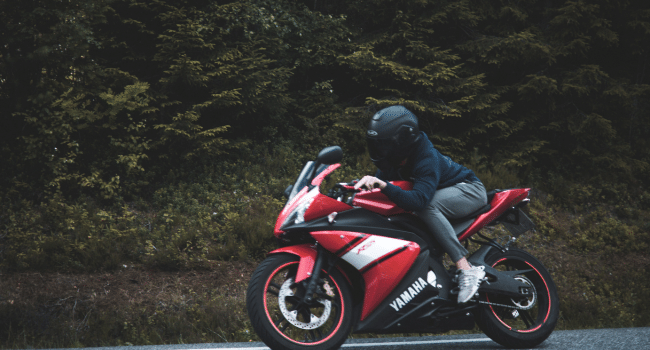Table of Contents
New to e-bikes? Start here. This guide distills the most important safety habits—what to wear, how to brake, where to ride, and how to handle batteries—so you can enjoy power and speed without surprises. You’ll get an easy pre-ride checklist, a first-week practice plan, and a quick spotlight on the Qiolor Tiger RL as a confident, beginner-friendly example.
Safety First: The 30-Second Cheat Sheet
- Helmet every ride; fit snug, level on your head.
- Bright and visible: daytime running lights + reflective elements.
- Two-finger rule: cover your brake levers; practice controlled stops.
- Start in low assist: bump PAS up only when stable.
- Ride where cars expect you: predictable line, clear signals.
- Battery basics: charge on a hard, dry surface; never use damaged chargers.
- Lock it right: solid U-lock + cable for wheels.
Know Your Class, Controls, and Power
E-bikes feel familiar—until the assist kicks in. Before your first trip, identify your bike’s class (1, 2, or 3), then learn how throttle and pedal-assist interact. For an electric bike for beginner riders, start at PAS 1–2 in an empty lot and get used to gentle roll-on. Keep your cadence steady; choppy pedaling can trigger uneven surges on some controllers. Memorize three muscle-memory moves: (1) cut assist down a level, (2) fully cover both brakes, and (3) horn/bell + light toggle.
Master Speed Management and Braking
E-bikes carry momentum. That’s great for hills—but it lengthens stopping distance. Practice progressive braking: squeeze smoothly, increase pressure as weight shifts forward, and keep your eyes level (it helps balance). In dry conditions, most stopping power comes from the front brake; in slick conditions, bias rear slightly more to avoid washouts. Build drills into your first week: ten hard stops from 10–12 mph, then from 15–18 mph, measuring how many parking-spot lengths you need. Your goal is predictable, straight-line stops without skids.
Be Brilliantly Visible
Treat visibility like armor. Use a bright, always-on headlight and a rear light with brake or pulse mode—even in daylight. Add reflective ankle bands (they move, which drivers notice) and consider a reflective decal on your helmet. At intersections, make eye contact and point where you’re going; it sounds small, but humans respond to clear, intentional gestures. If you ride at dawn or dusk, add a small clip-on light to your backpack or helmet for a higher sightline.
Road Positioning and Urban Awareness
Ride predictably: hold a straight line outside the door zone (about 3–4 feet from parked cars), signal early, and take the lane when it’s too narrow for safe passing. Scan for “left-cross” and “right-hook” risks at intersections. When approaching a green light, cover your brakes and watch front wheels of waiting cars—wheel movement is the earliest tell they’re pulling out. On paths, slow to jogging speed when passing pedestrians; call out “on your left” and ring once.
Battery, Charging, and Storage Safety
Your battery is the heart of your ride—treat it with care:
- Charge in the open on a non-flammable surface (tile, concrete), away from flammables.
- Use the OEM charger; avoid off-brand units with unknown cut-offs.
- Room-temp charging only; let a cold or hot pack normalize before plugging in.
- Storage: cool, dry place, around 40–70% if not riding for a few weeks.
- Inspection: stop using any pack that swells, smells like solvent, or runs unusually hot.
Pre-Ride Check: 60 Seconds That Prevents Problems
1. Tires: squeeze test; top up to the sidewall PSI range (lower for comfort and wet grip).
2. Brakes: spin each wheel; no rubbing; lever pull should be firm.
3. Bolts: quick scan—stem, handlebar, axle nuts/quick-releases.
4. Lights & bell: verify before moving.
5. Battery latch: locked; display and assist switching properly.
Weather, Surfaces, and Fat Tires
Wet roads reduce traction and hide slick paint lines. Slow down, brake earlier, and straighten the bike before you fully squeeze the levers. Avoid metal grates and wet leaves. Fat tires (3–4 inches) add comfort and stability for beginners, but remember they’re heavier—respect your stopping distances and corner a hair wider until it’s second nature.
Theft-Smart Habits
Use a quality U-lock through the frame and a fixed rack, plus a secondary cable or second U-lock for wheels. Park in bright, busy spots, and consider a discreet AirTag/Tile tucked inside a bag or under the saddle. Photograph your serial number and register it locally.
A 7-Day Confidence Plan (From Zero to City-Ready)
- Day 1–2: Empty lot: starts, stops, tight circles, and hand signals with PAS 1–2.
- Day 3–4: Quiet neighborhood streets: practice lane positioning, scanning, and rolling stops to a full stop.
- Day 5: Short errand loop (2–4 miles). Add a small hill and a few parked-car stretches.
- Day 6: Busy corridor at off-peak time; rehearse predictable merges and left turns.
- Day 7: Your actual commute at conservative speed, lights on, with the pre-ride checklist.
Model Spotlight: Qiolor Tiger RL (Beginner-Friendly Confidence, Retro Style)
Prefer a ready-to-ride platform that bakes in safety and stability for an electric bike for beginner?
The Qiolor Tiger RL pairs a 48V 13Ah battery with a claimed up to ~70 miles on pedal assist and ~40 miles on throttle-only, depending on terrain and rider weight.
It rolls on 20×4.0″ tires for grip and comfort, uses hydraulic disc brakes, and includes a bright integrated headlight with rear lighting and turn signals for visibility.
Max load is listed at 400 lb, and you’ll see a top speed reported between ~26–28 mph depending on configuration.
The RL is positioned above the JR with stronger acceleration and braking, and typically lists around $1,599–$1,837, reflecting the upgraded spec and café-racer styling that keeps you seen.

Final Take: Start Safe, Stay Confident
Smooth inputs, bright visibility, predictable lines, and battery care are the pillars of safe riding.
Spend your first two rides practicing braking and signaling before mixing with traffic.
If you want a stable, well-lit, hydraulic-brake setup with approachable power, the Qiolor Tiger RL is a strong, beginner-friendly example that balances range, control, and style.
Pick your practice lot, charge up, and ride the plan. Safe miles are happy miles—and they start today.
